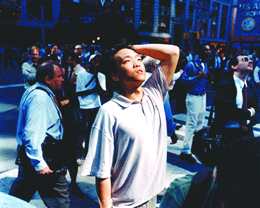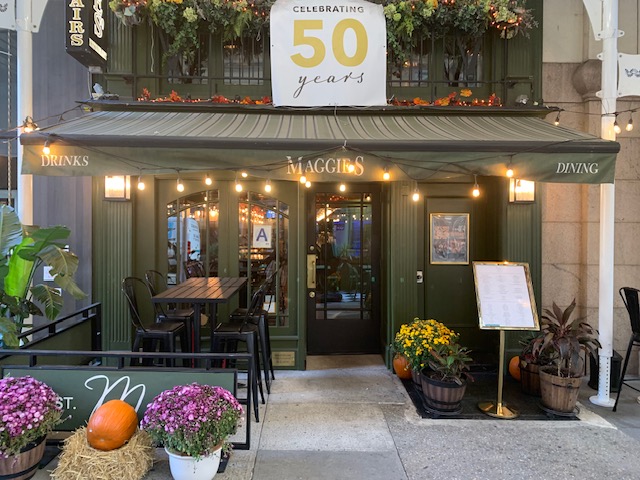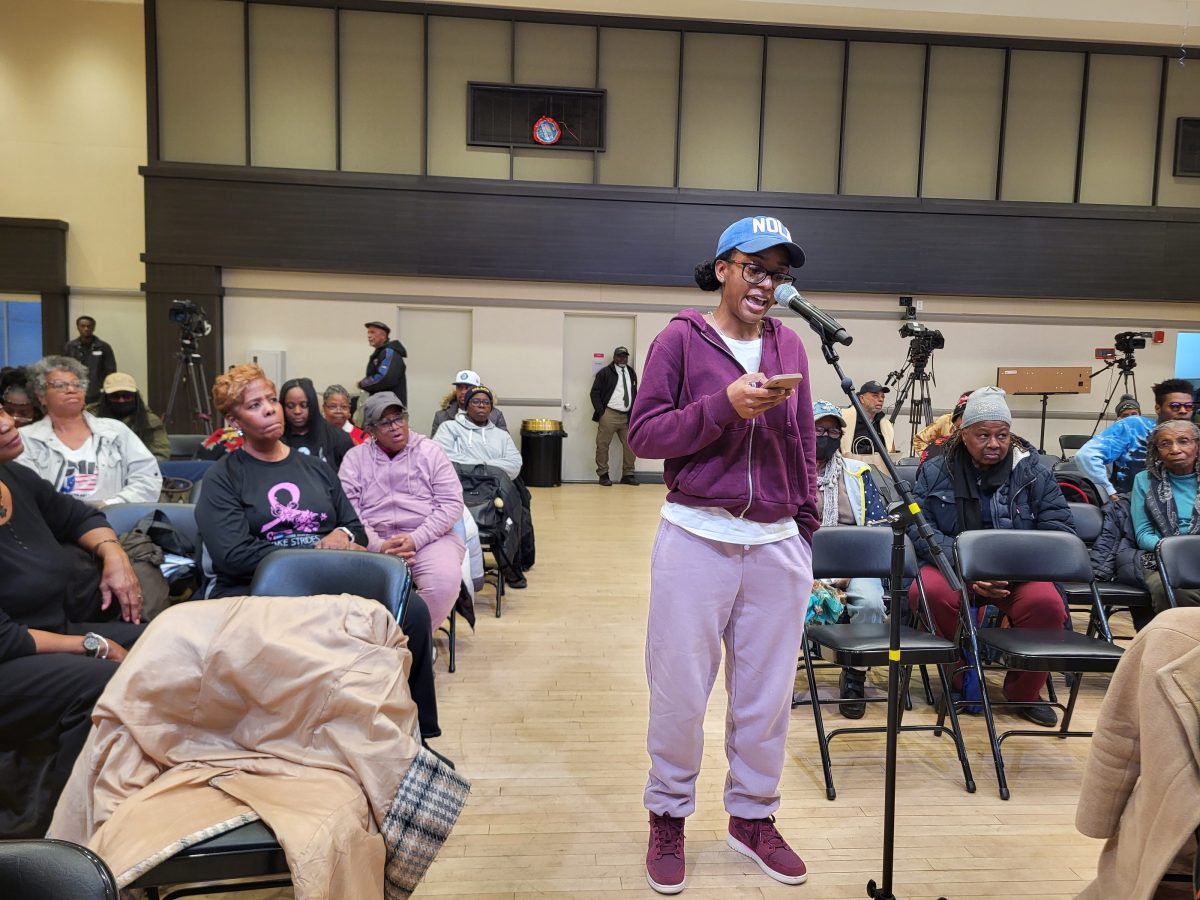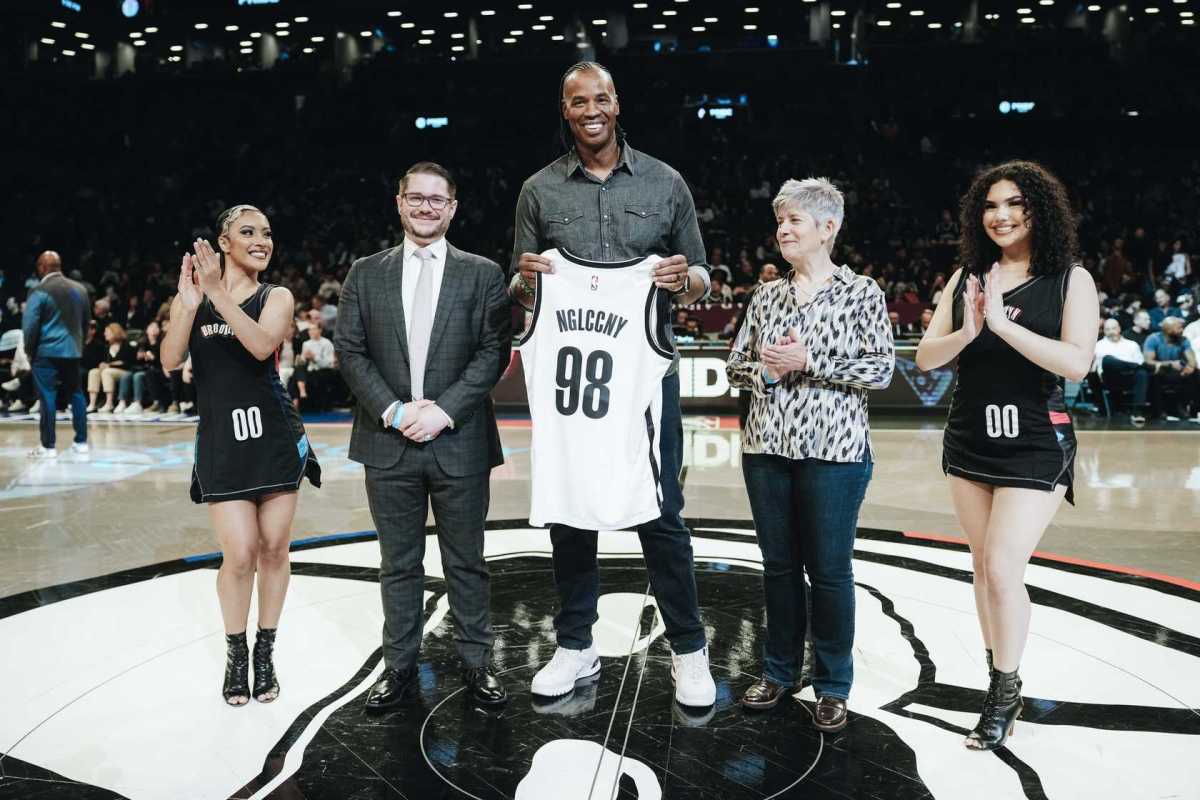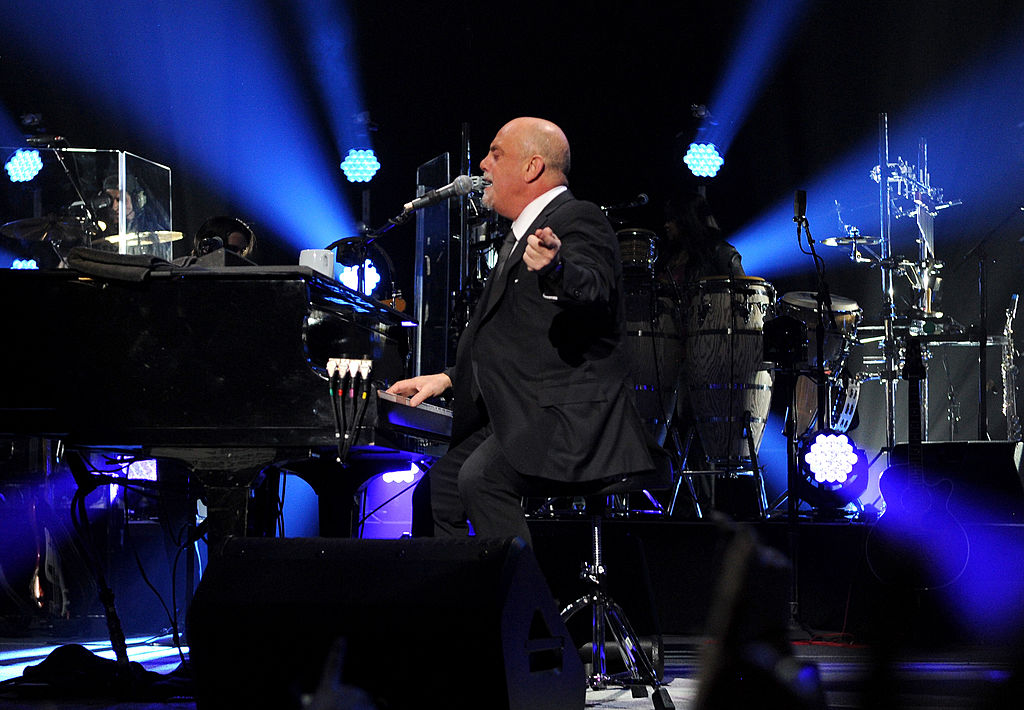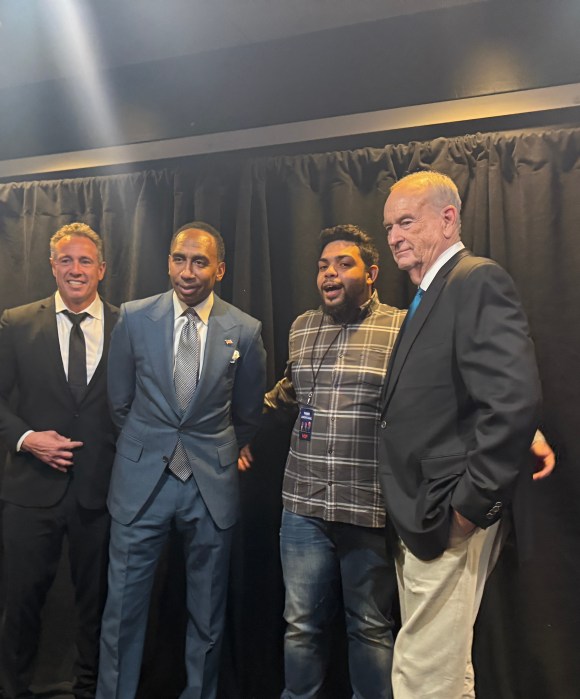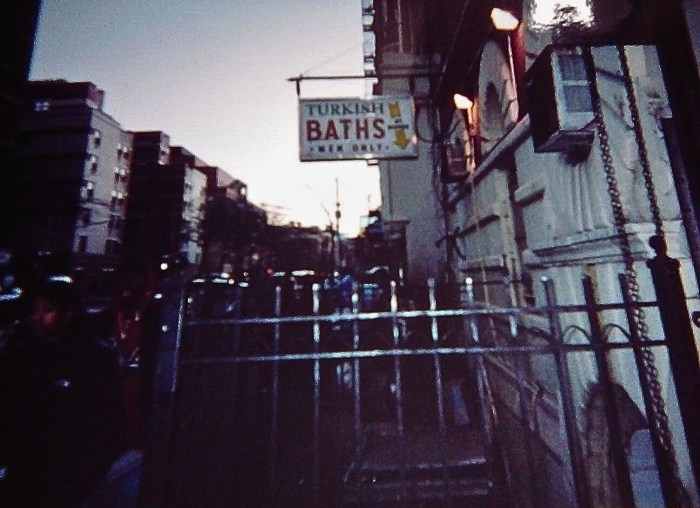By Nicole Davis
At the new “Here: Remembering 9/11” exhibit, installed outside the Path station on the perimeter fence of the World Trade Center site, the following words are printed on the L.M.D.C.’s information booth: “Think Back. Move Forward. It’s Time.” Directly below that, stuck inside the booth’s glass window, is a picture of the still-standing towers at night, with the admonishment: “September 11, 2001. Never Forget.”
Such are the mixed signals one gets at this outdoor exhibition, the first public show by the World Trade Center Memorial Museum. Still without a home for its planned artifacts, exhibits, and educational programs, they’ve come up with a creative, temporary home. Currently on view through mid-October, “Here” encompasses 42 pictures from “Here is New York,” an exhibit originally mounted in a Soho storefront at 116 Prince Street right after 9/11, which showcased amateur and professional photos alike. These selected images are bookended by ten pictures by Chris Callis, who photographed remnants from the wreckage such as an old subway turnstile, and one of the tower’s signature trident beams.
Approached from the northern end, and walking south, the photographs portray a quiet chronology, as in one beautiful, pre-9/11 image of the towers poking up through the clouds. But the most arresting photographs are of the expressions on people’s faces as they learned the news. There is a provocative picture of a woman in a headscarf crying — for our loss, or hers, we’re not sure. Joseph Rodriguez’s black and white photo is equally moving: in capturing two men in a bar, glued to the TV—one with his mouth agape, the other with his eyes shut, grimacing—we are all transported to that moment when we first saw, and couldn’t stop watching. There are also the uplifting scenes of solidarity: people gathered on the side of the street, cheering rescue workers on with posters bearing messages like “You are heroes.”
But moving along the fence, the images turn familiar — the tunnels of ash, the ghost-like faces, the papers strewn everywhere — and they become less powerful as they lose their ability to surprise. One striking exception is a photo by Mario Tama. Taken from above, his picture of the ant-like rescue workers at the site call to mind Sebastião Salgado, famous for photographing the physical laborers of the world, whether in Brazilian gold mines, Azerbaijan oil fields or Chinese factories, in a way that inspires awe in their immense tasks, and turns these everyday workers into heroes.
Bridging these two sides of the exhibit is the Port Authority’s timeline that traces the events of that day, like the exact times the North and South towers fell to the fact that it took Bush four hours to address the nation. Small details yes, but they bring that day back into sharp focus, just as the WTC fence, to which this exhibit is pinned, reminds us of where we are now.
On September 8, visitors will also be reminded of the small progress that has been made in the rebuilding of Lower Manhattan, when the second half of exhibit opens in 7 World Trade Center, on the 45th Floor. Called “9/11 and the American Landscape: Photographs by Jonathan Hyman,” the 63 photographs depict the various displays of remembrance erected around the country following 9/11, many in farms and front yards far from New York.
Gus Powell and Jonathan Hyman
Left, a picture by Gus Powell, one of the 52 photos mounted by the World Trade Center Memorial Museum to the WTC fence. Beside it is “Flag Trees,” painted by David Merrill and photographed by Jonathan Hyman, part of the second half of the exhibit, to open at 7 WTC on Sept 8 (Buildthememorial.org).



